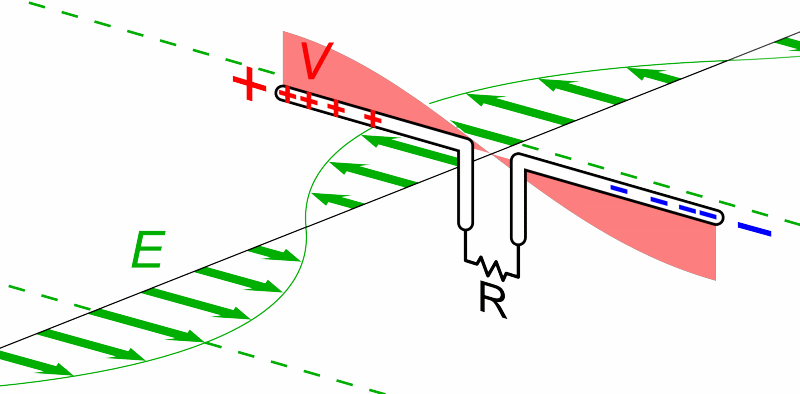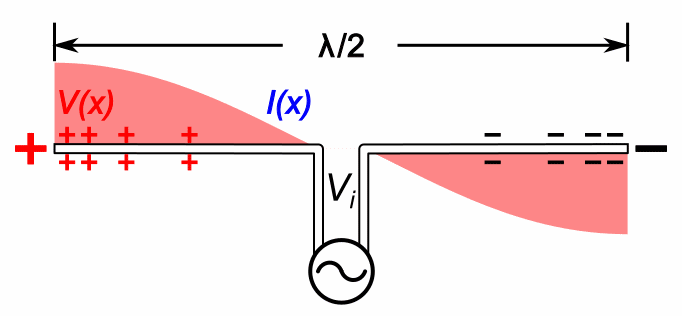Radio Wave Properties: Electric and Magnetic Dipole Antennae by Harvard Natural Sciences Lecture Demonstrations (2020)
Source. The dude lights bulbs on an antenna made of a single piece of copper, powered with EM radiation. Amazing.As well put by Wikipedia, a radio receiver has to perform three functions on the signal from the antenna:
- filtering, so you can tune the station you care about. This filters based on the frequency of the carrier wave you want. I.e. you use a bandpass filter.
- amplification: otherwise you won't be able to hear anything if the emitter is too far away
- demodulation: this means decoding the signal based on whatever way it was encoded, notably e.g. AM/FM
The first type of device that allowed sending Morse code without wires, as opposed to the wired electrical telegraph that previously existed.
Wireless voice transmission came about with modulation.
Articles by others on the same topic
There are currently no matching articles.

